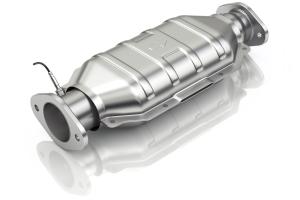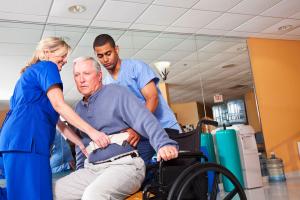Commercial driver’s licenses (CDLs)
The Commercial Motor Vehicle Safety Act of 1986 sought to improve highway safety by ensuring that drivers of large trucks and buses are qualified to operate those vehicles and to remove unsafe and unqualified drivers from the highways.
The Act made it illegal for CDL holders to have more than one license and required States to adopt testing and licensing standards for truck and bus drivers to check a person’s ability to operate the type of vehicle he/she plans to drive.
The Federal standard requires states to issue a CDL to drivers according to the following license classifications:
Class A
Any combination of vehicles with a Gross Combined Weight Rating (GCWR) of 26,001 or more pounds provided the Gross Vehicle Weight Rating (GVWR) of the vehicle(s) being towed is in excess of 10,000 pounds.
Class B
Any single vehicle with a GVWR of 26,001 or more pounds, or any such vehicle towing a vehicle not in excess of 10,000 pounds GVWR.
Class C
Any single vehicle, or combination of vehicles, that does not meet the definition of Class A or Class B, but is either designed to transport 16 or more passengers, including the driver, or is transporting certain hazardous materials.
Endorsements and restrictions
Drivers who operate special types of Commercial Motor Vehicles (CMVs) also need to pass additional tests to obtain any of the following endorsements on their CDL:
T — Double/triple trailers (knowledge test only)
P — Passenger (knowledge and skills tests)
N — Tank vehicle (knowledge test only)
H — Hazardous materials (knowledge test only and TSA threat assessment)
X — Combination of tank vehicle and hazardous materials
S — School bus (knowledge and skills tests)
More information on CDLs
Visit the CDL section of the Federal Motor Carrier Safety Administration’s website.
This material is provided for informational purposes only and does not provide any coverage or guarantee loss prevention. The examples in this material are provided as hypothetical and for illustration purposes only. The Hanover Insurance Company and its affiliates and subsidiaries (“The Hanover”) specifically disclaim any warranty or representation that acceptance of any recommendations contained herein will make any premises, or operation safe or in compliance with any law or regulation. By providing this information to you. The Hanover does not assume (and specifically disclaims) any duty, undertaking or responsibility to you. The decision to accept or implement any recommendation(s) or advice contained in this material must be made by you.
LC JAN 2019 12-61
171-0839 (11/13)
Commercial driver’s licenses (CDLs)
The Commercial Motor Vehicle Safety Act of 1986 sought to improve highway safety by ensuring that drivers of large trucks and buses are qualified to operate those vehicles and to remove unsafe and unqualified drivers from the highways.
The Act made it illegal for CDL holders to have more than one license and required States to adopt testing and licensing standards for truck and bus drivers to check a person’s ability to operate the type of vehicle he/she plans to drive.
The Federal standard requires states to issue a CDL to drivers according to the following license classifications:
Class A
Any combination of vehicles with a Gross Combined Weight Rating (GCWR) of 26,001 or more pounds provided the Gross Vehicle Weight Rating (GVWR) of the vehicle(s) being towed is in excess of 10,000 pounds.
Class B
Any single vehicle with a GVWR of 26,001 or more pounds, or any such vehicle towing a vehicle not in excess of 10,000 pounds GVWR.
Class C
Any single vehicle, or combination of vehicles, that does not meet the definition of Class A or Class B, but is either designed to transport 16 or more passengers, including the driver, or is transporting certain hazardous materials.
Endorsements and restrictions
Drivers who operate special types of Commercial Motor Vehicles (CMVs) also need to pass additional tests to obtain any of the following endorsements on their CDL:
T — Double/triple trailers (knowledge test only)
P — Passenger (knowledge and skills tests)
N — Tank vehicle (knowledge test only)
H — Hazardous materials (knowledge test only and TSA threat assessment)
X — Combination of tank vehicle and hazardous materials
S — School bus (knowledge and skills tests)
More information on CDLs
Visit the CDL section of the Federal Motor Carrier Safety Administration’s website.
This material is provided for informational purposes only and does not provide any coverage or guarantee loss prevention. The examples in this material are provided as hypothetical and for illustration purposes only. The Hanover Insurance Company and its affiliates and subsidiaries (“The Hanover”) specifically disclaim any warranty or representation that acceptance of any recommendations contained herein will make any premises, or operation safe or in compliance with any law or regulation. By providing this information to you. The Hanover does not assume (and specifically disclaims) any duty, undertaking or responsibility to you. The decision to accept or implement any recommendation(s) or advice contained in this material must be made by you.
LC JAN 2019 12-61
171-0839 (11/13)
Commercial driver’s licenses (CDLs)
The Commercial Motor Vehicle Safety Act of 1986 sought to improve highway safety by ensuring that drivers of large trucks and buses are qualified to operate those vehicles and to remove unsafe and unqualified drivers from the highways.
The Act made it illegal for CDL holders to have more than one license and required States to adopt testing and licensing standards for truck and bus drivers to check a person’s ability to operate the type of vehicle he/she plans to drive.
The Federal standard requires states to issue a CDL to drivers according to the following license classifications:
Class A
Any combination of vehicles with a Gross Combined Weight Rating (GCWR) of 26,001 or more pounds provided the Gross Vehicle Weight Rating (GVWR) of the vehicle(s) being towed is in excess of 10,000 pounds.
Class B
Any single vehicle with a GVWR of 26,001 or more pounds, or any such vehicle towing a vehicle not in excess of 10,000 pounds GVWR.
Class C
Any single vehicle, or combination of vehicles, that does not meet the definition of Class A or Class B, but is either designed to transport 16 or more passengers, including the driver, or is transporting certain hazardous materials.
Endorsements and restrictions
Drivers who operate special types of Commercial Motor Vehicles (CMVs) also need to pass additional tests to obtain any of the following endorsements on their CDL:
T — Double/triple trailers (knowledge test only)
P — Passenger (knowledge and skills tests)
N — Tank vehicle (knowledge test only)
H — Hazardous materials (knowledge test only and TSA threat assessment)
X — Combination of tank vehicle and hazardous materials
S — School bus (knowledge and skills tests)
More information on CDLs
Visit the CDL section of the Federal Motor Carrier Safety Administration’s website.
This material is provided for informational purposes only and does not provide any coverage or guarantee loss prevention. The examples in this material are provided as hypothetical and for illustration purposes only. The Hanover Insurance Company and its affiliates and subsidiaries (“The Hanover”) specifically disclaim any warranty or representation that acceptance of any recommendations contained herein will make any premises, or operation safe or in compliance with any law or regulation. By providing this information to you. The Hanover does not assume (and specifically disclaims) any duty, undertaking or responsibility to you. The decision to accept or implement any recommendation(s) or advice contained in this material must be made by you.
LC JAN 2019 12-61
171-0839 (11/13)
Commercial driver’s licenses (CDLs)
The Commercial Motor Vehicle Safety Act of 1986 sought to improve highway safety by ensuring that drivers of large trucks and buses are qualified to operate those vehicles and to remove unsafe and unqualified drivers from the highways.
The Act made it illegal for CDL holders to have more than one license and required States to adopt testing and licensing standards for truck and bus drivers to check a person’s ability to operate the type of vehicle he/she plans to drive.
The Federal standard requires states to issue a CDL to drivers according to the following license classifications:
Class A
Any combination of vehicles with a Gross Combined Weight Rating (GCWR) of 26,001 or more pounds provided the Gross Vehicle Weight Rating (GVWR) of the vehicle(s) being towed is in excess of 10,000 pounds.
Class B
Any single vehicle with a GVWR of 26,001 or more pounds, or any such vehicle towing a vehicle not in excess of 10,000 pounds GVWR.
Class C
Any single vehicle, or combination of vehicles, that does not meet the definition of Class A or Class B, but is either designed to transport 16 or more passengers, including the driver, or is transporting certain hazardous materials.
Endorsements and restrictions
Drivers who operate special types of Commercial Motor Vehicles (CMVs) also need to pass additional tests to obtain any of the following endorsements on their CDL:
T — Double/triple trailers (knowledge test only)
P — Passenger (knowledge and skills tests)
N — Tank vehicle (knowledge test only)
H — Hazardous materials (knowledge test only and TSA threat assessment)
X — Combination of tank vehicle and hazardous materials
S — School bus (knowledge and skills tests)
More information on CDLs
Visit the CDL section of the Federal Motor Carrier Safety Administration’s website.
This material is provided for informational purposes only and does not provide any coverage or guarantee loss prevention. The examples in this material are provided as hypothetical and for illustration purposes only. The Hanover Insurance Company and its affiliates and subsidiaries (“The Hanover”) specifically disclaim any warranty or representation that acceptance of any recommendations contained herein will make any premises, or operation safe or in compliance with any law or regulation. By providing this information to you. The Hanover does not assume (and specifically disclaims) any duty, undertaking or responsibility to you. The decision to accept or implement any recommendation(s) or advice contained in this material must be made by you.
LC JAN 2019 12-61
171-0839 (11/13)





